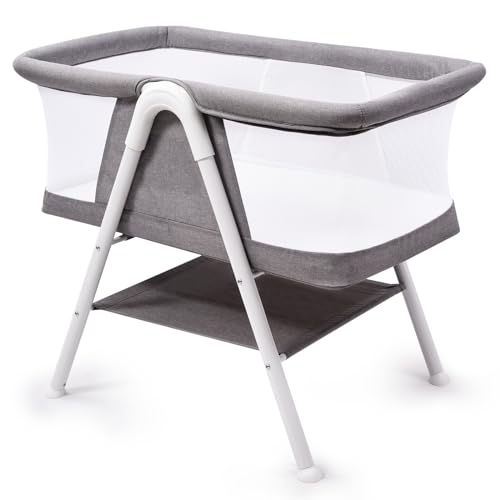14 Misconceptions Common To Tots And Cots
Tots and Cots: A Comprehensive Guide for Parents
When it concerns ensuring a safe and comfortable sleeping environment for babies and toddlers, the options moms and dads make— ranging from cribs to cots— can significantly impact their well-being. Today's post dives deep into the intricacies of selecting the very best sleeping plans for tots, highlighting security, style, performance, and how these options progress as a child grows.
Comprehending Tots and Cots
Tots typically refer to children, especially young children aged between 1 to 3 years, while cots are the sleeping plans specifically developed for babies and young children. The proper sleeping devices for this age consists of different kinds of cots, cribs, and toddler beds.
Types of Cots
Different designs exist to meet the diverse needs of both parents and kids. Below is a list describing the most common kinds of cots available:
Standard Crib
- A standard crib is created for babies and normally includes sides that can be adjusted to various heights.
Convertible Crib
- This type of crib can convert into a toddler bed, daybed, or full-sized bed as the child grows, making it a long-term financial investment.
Portable Crib
- Also understood as travel cots, these are light-weight and easily foldable, perfect for taking a trip or smaller living spaces.
Co-Sleeper
- A co-sleeper crib connects to the side of the parents' bed, permitting for easy gain access to while ensuring the baby has a different and safe sleeping space.
Toddler Bed
- A young child bed is a little bed that resembles a basic bed however is created particularly for toddlers, typically featuring security rails.
Mini Crib
- Mini cribs are smaller than basic cribs, making them a fantastic option for tight spaces, however they appropriate for babies just.
Security Considerations
Making sure safety is critical when picking a cot for a child. Here are crucial safety guidelines parents should think about:
- Check for CPSC Certification: Ensure that the cot sticks to the Consumer Product Safety Commission (CPSC) standards.
- Prevent Drop-Sides: Cots with drop-sides have actually been linked to safety dangers, and the current safety regulations restrict them.
- Utilize a Firm Mattress: A firm mattress decreases the risk of suffocation and ought to fit comfortably within the cot.
- Keep Bedding Simple: Use a fitted sheet and prevent pillows, comforters, and packed animals that can posture suffocation threats.
- Follow Weight and Age Guidelines: Ensure the child has not surpassed the cot's weight limit and is still within the recommended age.
Transitioning from a Cot to a Toddler Bed
The transition from a cot to a young child bed can be an emotional milestone for both moms and dads and kids. Here are steps to alleviate the transition:
Timing
Choosing when to transition can be subjective, however it's usually advised to make the switch in between 18 months and 3 years, based upon factors like:
- Physical Ability: If the kid is climbing out of the cot.
- Potty Training: Consider transitioning if the kid is bathroom training and requires much easier access.
- Behavior: Exhibiting indications of maturity, such as following guidelines or expressing a desire for self-reliance.
Tips for Making the Transition Smooth
Include Your Child: Let the kid pick their new bedding or bed decoration to instill excitement about the change.
Keep Routine Consistent: Maintain the child's bedtime regimen to supply comfort throughout this duration of modification.
Discuss the Change: Discuss the transition to a young child bed favorably, making it sound like a great experience.
Safety Measures: Place the bed against the wall or usage bed rails to prevent falling during sleep.
Picking the Right Bed
When selecting a toddler bed, parents require to think about factors like:
- Height: Low-profile beds are perfect for toddlers who might fall out during sleep.
- Resilience: Ensure the bed can endure active play as well as sleep.
- Style and Design: Choose a design that matches the kid's room and is interesting the child.
Choosing the ideal cot for your child can be a complicated process, but comprehending the options readily available, key safety considerations, and the ideal timing for transitioning to a toddler bed can make this journey much easier for parents. Investing time and effort into these choices will ensure that your child has a safe, comfortable, and supporting sleep environment.
- * *
Frequently asked questions
1. What is the distinction in between a cot and a crib?
- A cot is normally a smaller sized bed designed for younger young children, while a crib is a larger bed that is typically appropriate for babies as much as 3 years old.
2. When should I move my child from a crib to a young child bed?
- The shift time is typically between 18 months and 3 years; this modification is based upon the child's physical abilities and behavioral indications.
3. How can I ensure my kid is safe while sleeping?
- Constantly comply with security requirements, use a company mattress with a basic bed linen arrangement, and monitor the cot's weight limitation.
4. What should I do if my kid attempts to climb out of the cot?
- If your child is climbing out, it might be time to think about transitioning to a young child bed to avoid falls.
5. Can click hyperlink utilize the exact same bed mattress when transitioning?
Usually, it is best to change the crib mattress with one that specifies to the toddler bed. Guarantee it fits comfortably and abides by safety standards.
- *
By thinking about these elements, parents can design healthy sleep practices and provide their children with a safe environment that promotes restful sleep. Buying quality sleeping plans will contribute to the kid's overall advancement and happiness.
